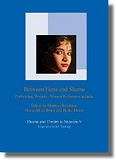Between Fame and Shame
Brückner, Heidrun [u.a.] [Hrsg.]:
Between Fame and Shame : Performing Women – Women Performers in India / ed. by Heidrun Brückner ; Hanne M. de Bruin ; Heike Moser. - Wiesbaden : Harrassowitz, 2011. - 284 S. - (Drama und Theater in Südasien ; 9)
ISBN 978-3-447-06281-7
EUR 48,00
DDC: 792.0820954
-- Angekündigt für März 2011 --
Beschreibung
Between Fame and Shame edited by Heidrun Brückner, Hanne de Bruin, and Heike Moser presents twelve essays dealing with the role of women in various Indian performance traditions and in different social contexts. The volume's contributions are intended to convey a better understanding of the ? often troubled ? relation between women and public performances. The cultural performances studied range from possession performed by women as a religious service to a deity, to on-stage performances by professional actresses representing different performance genres. The regional focus is on South India, especially Kerala and Karnataka.
A special feature of the book is the simultaneous internet publication of the audio, audio-visual, and visual materials referred to in the articles. Some of the audio provide for the first time samples of oral literary genres recorded, in some cases as early as the 1970s. The authors of the essays are anthropologists (Claus, Schömbucher, Guillebaud), folklorists (Rai), Indologists (Brückner, de Bruin, Moser, Johan, Griebl/Sommer) sociologists (Schulze), and theatre scholars (Daugherty, Pitkow) from India, Europe, and the USA. [Verlagsinformation]
Herausgeberin
HEIDRUN BRÜCKNER, Professorin für Indologie, Universität Würzburg. Profilseite.
HEIKE MOSER ist Wissenschaftliche Koordinatorin des Asien-Orient-Instituts und Wissenschaftliche Mitarbeiterin der Abteilung Indologie, Universität Tübingen. Profilseite.
Quellen: Harrassowitz; Deutsche Nationalbibliothek; Buchhandel.de
Ähnlich
- Binder: Yaksagana Rangabhumi
- Revealing the Art of Nāṭyaśāstra
- Théâtres d'Asie et d'Orient
- Natyasastra and the Indian Dramatic Tradition
- Théâtres d'Asie à l'œuvre
- Menon: The Performance of Nationalism
- Le théâtre s'écrit aussi en Asie
- Performance and Culture
- Jana Sanskriti
- Kudiyattam Theatre and the Actor's Consciousness

